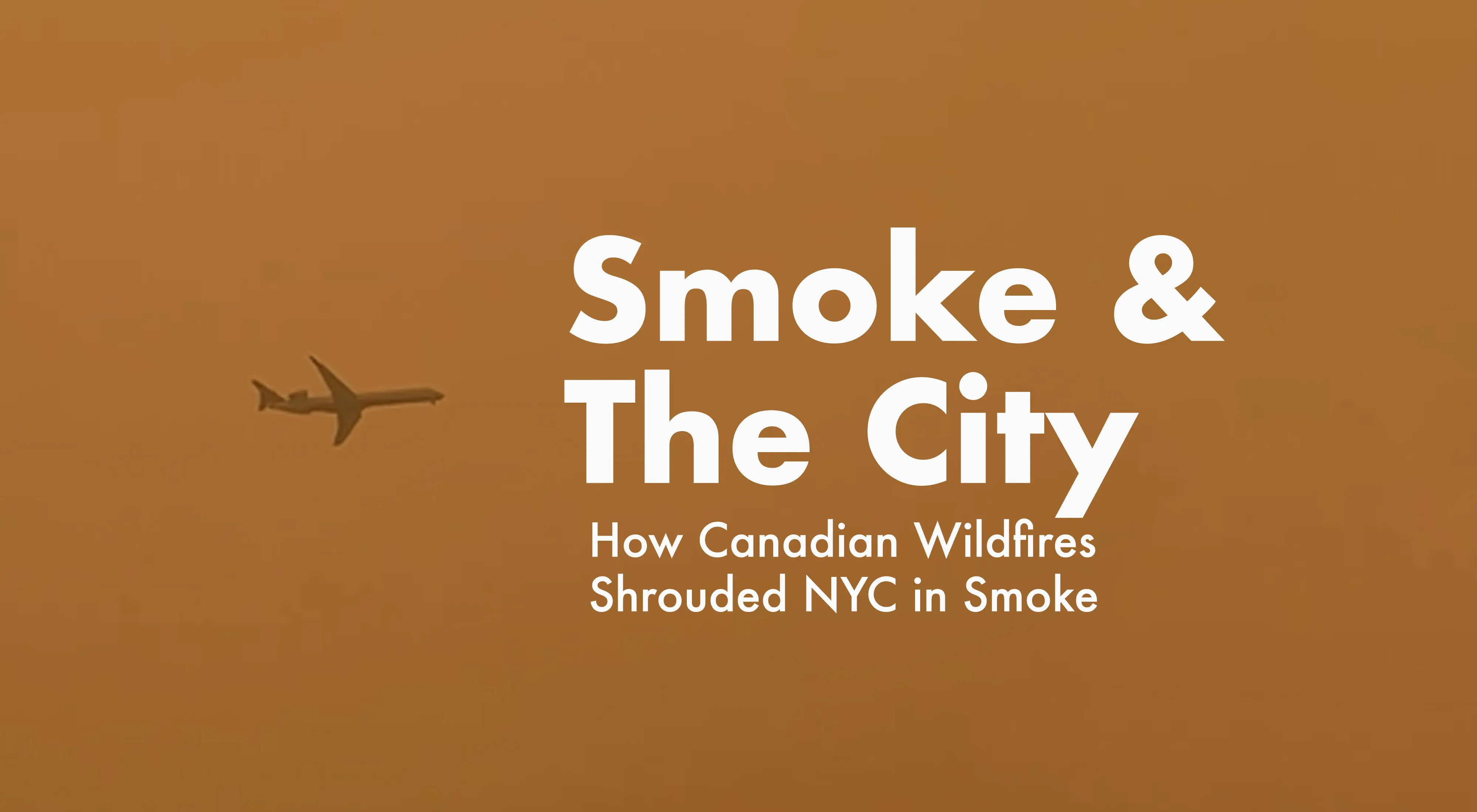Climate change fueled disasters have a way of transcending geographical boundaries, reminding us of the interconnectedness of our world. On June 7th, 2023, the devastating wildfires that ravaged Canada had an unexpected impact on the bustling metropolis of New York City, located thousands of miles away.
This year, Canada experienced an unprecedented wildfire season, fueled by a combination of dry conditions and high temperatures. These fires rapidly spread across vast forested areas, including provinces such as Quebec and Ontario. The scale and severity of these wildfires prompted widespread concern and emergency response efforts.
As June’s wildfires continued to burn, large plumes of smoke and ash were released into the atmosphere. These plumes were carried by prevailing winds and a unfortunately timed low pressure system across great distances, eventually reaching major metropolises of the northeastern region of North America, including New York City. The air quality in affected areas deteriorated significantly, posing risks to human health and the environment. Parts of the city measured AQI (Air Quality Index) ratings of upwards of 468, which is considered extremely hazardous.
The Life After Life team in NYC experienced the event firsthand, waking up to a skyline veiled in an unusual haze. The smoke particles suspended in the air created an eerie ambiance, obscuring the sun and casting a muted glow over the city. This phenomenon resulted in reduced visibility and a distinct change in the usual appearance of the urban landscape. Our co-founder, Shaily Patil, shares her experience with us about this day:
"At around 2 p.m. when the visibility and air quality were at their worst. Breathing became extremely difficult, and everyone had to wear masks once again. After stepping outside for just 10 minutes, my eyes were burning for about 2 hours upon returning indoors. I am still coughing a couple days out, and I am quite certain it is a result of that brief exposure. I had never witnessed anything like it before in my life."
She continued,
"This may be the first occurrence, but certainly won't be the last. I hope it serves as a wake-up call for people. We must all remember that regardless of who is causing harm to the planet and where it is happening, climate change is not an isolated event. Its repercussions are, and will be, experienced worldwide."
Fine particulate matter, known as PM2.5, is a major component of wildfire smoke and is associated with respiratory problems, cardiovascular issues, and increased susceptibility to respiratory infections. The elderly, children, and individuals with pre-existing respiratory conditions were particularly vulnerable.
The Canadian wildfires and the subsequent transportation of smoke particles to New York City highlighted the far-reaching environmental consequences of such events. The additional carbon emissions and pollutants released into the atmosphere exacerbate climate change, with potential long-term implications for weather patterns, ecosystems, and global warming.
The wildfires in Canada serve as a stark reminder of the interconnectivity of our world. Even though New York City was geographically distant from the disaster, it felt the reverberations through the atmospheric transport of smoke and ash. The impact on air quality and daily life highlighted the vulnerability of urban centers and the urgent need for collective action to address climate change and mitigate the risks posed by natural disasters. Together, we wade further into the climate change disaster slowly with a more tangible realization of exactly how the consequences of such events will extend beyond their immediate locations, necessitating global cooperation and proactive measures to protect our planet and its inhabitants.

